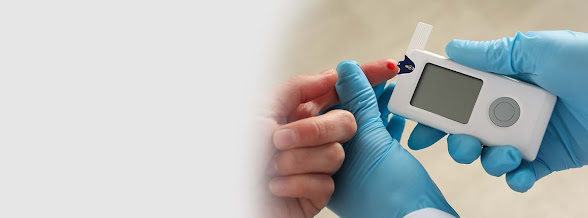Symptoms of Type 1 Diabetes in Infants and Toddlers
Type 1 diabetes in infants is when the child’s body no longer produces a vital hormone, i.e. insulin. A child requires insulin to survive. So, the missing insulin needs to be replaced with either injections or an insulin pump. The diagnosis of type 1 diabetes in children can be overwhelming, particularly in the early stages. Unfortunately, the signs and symptoms of type 1 diabetes in infants and toddlers are not always easy to pinpoint. It is challenging to let the parents know something is wrong, especially for infants.
In this blog, we will discuss the signs and symptoms of Type 1 diabetes in infants and children. This post aims to educate parents so that they can identify the signs at an initial stage and get their child treated immediately. To draft this post, we took references from the expert diabetologist at Magna Centre, widely renowned for offering the best diabetes treatment in Hyderabad. The treatments provided by these expert specialists are tailored according to the unique needs of the patients.
What are the Signs of Diabetes in Infants and Toddlers?
Type 1 diabetes in children is also called Juvenile Diabetes. It affects children more often but can also develop in adults in rare situations. Diabetes is when the body becomes resistant to insulin and does not produce it to metabolize sugar in the blood. Following are the signs of diabetes in infants and toddlers:
1. Increased Urination
One of the warning signs of type 1 diabetes is increased urination. High sugar levels often lead to a toxic environment in the blood. The body tries to cleanse itself of the extra sugar to restore balance. The kidneys also produce excessive urine, which makes the child urinate more.
2. Excessive Thirst
The body gets hydrated due to frequent urination. If the child demands water too frequently, the parent must consult a doctor immediately, as it could be a warning sign of Type 1 diabetes. To do this, you can consult the expert diabetologists at Magna Centre, the best diabetes centre in Hyderabad. Some other symptoms are mentioned below.
3. Extreme Hunger
Our body converts the food that we eat into glucose. When one suffers from type 1 diabetes, the body can not use glucose (due to lack of insulin). This could also make the child feel low in energy. So the body can demand more food to stave off hunger. If the child’s appetite increases, this could be a sign that the child is showing signs of type 1 diabetes.
4. Mood Change
The continuous fluctuation of blood sugar levels creates havoc on the mood of a person. When the sugar levels are low, it makes the infant feel irritable. When it is high, they feel full of energy and are in a better mood. When the levels dip too low or too high, it can make the infant feel depressed. Frequent and unexplained mood swings in kids can be a warning sign of type 1 diabetes.
5. Blurred Vision
The eye gives us sight because the lens bends and stretches to help form images, which are then sent as signals to the brain. Fluids nourish the lens in the eye. The amount of sugar in the blood affects the appearance's flexibility and results in blurred vision. Controlling blood sugar levels and managing diabetes can help restore normal vision. Vision changes are an early indication of type 1 diabetes.
6. Severe Fatigue
In type 1 diabetes, there can also be a high amount of sugar in the blood that other cells cannot use. This could make the infant feel weak and tired. Excessive and unexplained weakness and tiredness can be a warning sign of type 1 diabetes.
7. Unexplained Weight Loss
The body demands a lot of food and feels more hungry than usual. Since the primary energy-providing mechanism does not work correctly, the patient might experience unexplained weight loss. The high sugar levels do not help the cells deprived of energy, leading to excessive weight loss.
8. Bed Wetting
This is most commonly seen in children who have not been wetting the bed earlier. High sugar levels also lead to increased urination. Children are sometimes unable to control their urges in their sleep, which leads to bedwetting. This is another sign of type 1 diabetes.
9. Fruity-Smelling Breath
When the body uses fat to produce energy, ketones develop. Ketones offer a fruity-smelling scent to the breath. If left unchecked, high levels of ketones in the body lead to ketoacidosis, which is a life-threatening condition.
10. Yeast Infections
This is also a warning sign of type 1 diabetes. High sugar levels are also dangerous for the health of the genital areas. This could make a girl child prone to many vaginal and urinary tract infections. It is essential to control blood sugar to reduce the frequency of infections.
11. Nausea and Vomiting
This is considered a warning sign of type 1 diabetes. When the body burns fat and muscles instead of carbohydrates to release energy, it releases ketones, a waste material. They do not cause much damage, but in high quantities, they can cause a lot of toxicity in the blood, which further leads to vomiting and nausea.
Final Takeaway
If you have any reasons to believe that you are seeing signs of type 1 diabetes in your infant or toddler, it is vital to see a diabetes doctor immediately. You can also consult the renowned diabetologist in Hyderabad at Magna Centre, who will provide effective treatments to manage your child’s type 1 diabetes.
Based on the diagnosis, the expert diabetologists at the centre specialize in insulin therapy and continuous glucose monitoring to improve your child’s quality of life. The skilled doctors at the centre place knowledge and cutting-edge solutions at the forefront of diabetes care. They offer customized treatments for type 1 and type 2 diabetes, as well as gestational diabetes and other related conditions.
For more details on diabetes treatment, visit Magna Centre today!
Read More:




Comments
Post a Comment